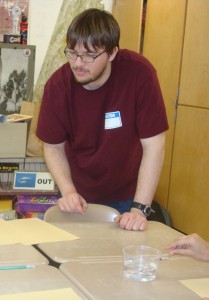While the Williams SPS aims to provide advice for professional development, we also want to foster a relationship between the Williams Physics community and the surrounding community through outreach activities at local schools.
How to Get Involved
Many things go into planning an outreach activity. There are so many possibilities and opportunities to be creative when it comes to outreach, but you need to be proactive about organization and communication. Talk to the Williams Center for Learning in Action, physics professors, and other physics students to figure out what types of outreach are possible. Figure out what is most needed in the community, and try to tailor your project to that. This will include a target age group. If your outreach involves going into a school, the state-wide curriculum will dictate what you can teach based on the students’ grade level. Find out how many Williams students are willing to participate, and when and for how long would be best. Is it an afternoon spent in the classroom teaching a lesson, or a big demonstration held in a multipurpose room for an assembly of children? More students are reached by activities planned during the school day, although it is harder to find a time that works for Williams students during the week. Once you have set up a meeting time and chosen a lesson plan, gather all the supplies you need at least a week in advance and meet with the Williams students who will be involved to discuss strategy and do a quick run through of the lesson.
Contact the current SPS leadership for more on getting involved.
Our Projects
Lanesborough Elementary School, 5th grade, Thursday, March 7, 2013
Our first outreach activity was a great success! With the help of Jennifer Swoap, Williams’ Assistant Director for Elementary School Outreach at Center for Learning in Action, four Williams astrophysics students took a lesson on how light behaves in different media to Sean MacDonald’s 5th grade math and science class at Lanesborough Elementary School. We began the lesson by asking the children what they knew about light. We then presented them with a glass beaker full of vegetable oil with a glass rod resting inside of the beaker, asking them why they could only see the glass rod above the line of the vegetable oil. We split up into two groups, looking at light in different mediums by examining a fork sitting in water and the shadow of a comb when light is shined through water (the difference between this and this), asking the children to draw and comment on what they saw. We ended by asking them to summarize what they had learned and helping them explain why they couldn’t see the glass rod in the beaker of vegetable oil. This led to the conclusion that light only bends when it changes from a medium with one index of refraction to a medium with a different index of refraction (where vegetable oil and glass actually have very close indices of refraction). Below are some pictures from our day at the elementary school.



